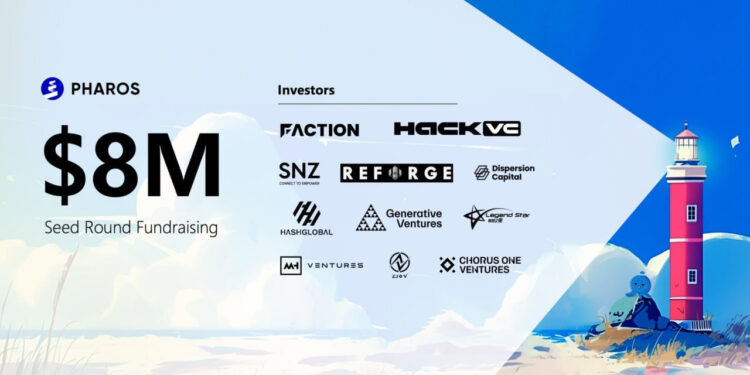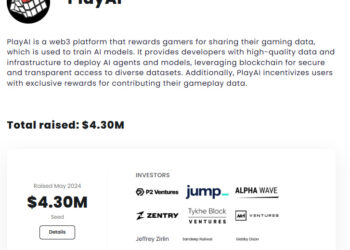The blockchain industry continues to grow at lightning speed, with new projects aiming to solve the challenges of scalability, security, and interoperability. Among these rising stars is Pharos, a Layer-1 blockchain designed for high-speed, scalable, and decentralized applications.
In this guide, you will learn:
-
What Pharos is and why it matters.
-
The unique features that make it stand out from other Layer-1 blockchains.
-
How to participate in the Pharos testnet.
-
Step-by-step instructions to complete tasks and qualify for the upcoming airdrop.
-
Why early users have the chance to receive retroactive rewards, similar to previous high-profile blockchain projects.
If you are looking for the next opportunity in the crypto space, joining the Pharos testnet could be your ticket to future free tokens.
Introduction to Pharos
Pharos is a Parallel-Deep Layer-1 blockchain network built to support high-performance decentralized applications. Unlike traditional blockchains that often face bottlenecks in speed and scalability, Pharos integrates cutting-edge technology to deliver:
-
1-second finality for transactions.
-
Lower storage costs compared to legacy systems.
-
Enhanced security through an advanced consensus mechanism called AsyncBFT.
-
EVM compatibility, meaning developers familiar with Ethereum can easily deploy their decentralized apps (dApps) on Pharos using existing tools.
The project has already raised $8 million in funding, which highlights the strong backing and confidence from investors. This early support suggests that Pharos is not just another experimental blockchain, but a serious contender in the next generation of Web3 infrastructure.
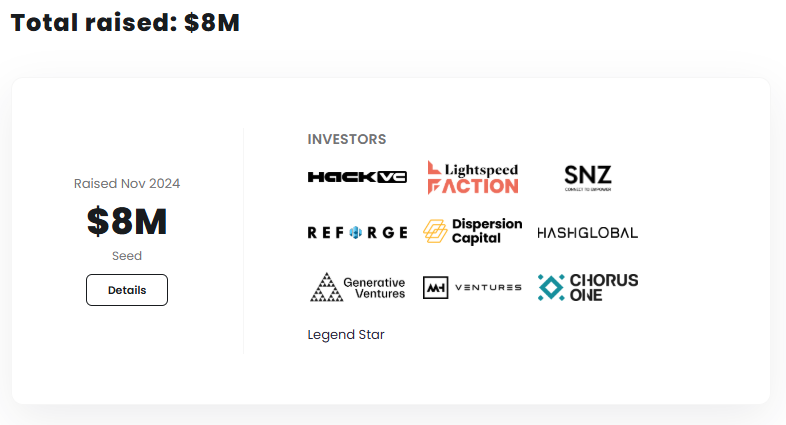
Why Pharos Stands Out
Pharos is not simply another blockchain that copies Ethereum or Bitcoin. It introduces several innovations that could reshape how developers and users interact with decentralized systems.
1. Parallel-Deep Layer-1 Design
The “Parallel-Deep” architecture allows Pharos to process multiple tasks simultaneously without compromising speed or security. This is especially useful for large-scale applications in DeFi (Decentralized Finance), RWA (Real-World Assets), and DePIN (Decentralized Physical Infrastructure Networks).
2. AsyncBFT Consensus
Consensus is the heart of any blockchain. While Proof-of-Work (PoW) and Proof-of-Stake (PoS) have their limitations, Pharos employs AsyncBFT. This mechanism enables faster confirmation of transactions with higher resistance to malicious attacks.
3. Unified Account System
Unlike blockchains that isolate accounts by virtual machines, Pharos provides a unified account system across multiple environments. This makes it easier to manage assets and interact with applications across chains.
4. EVM Compatibility
Developers already familiar with Ethereum will find Pharos easy to use. The ability to leverage existing Ethereum tools means lower barriers to entry and faster adoption.
The Pharos Testnet Airdrop
To encourage users to explore its ecosystem, Pharos has launched a public testnet with an airdrop campaign. By participating in the testnet, you not only get to try out the network’s features but also stand a chance to receive future rewards once the mainnet goes live.
These rewards are usually given in the form of retroactive airdrops, a common trend in the blockchain industry. Projects like Optimism, Arbitrum, and Celestia have rewarded early users with significant token distributions, sometimes worth thousands of dollars.
Pharos may follow the same strategy, making this testnet an exciting opportunity for early adopters.
Step-by-Step Guide to Join the Pharos Testnet
Here’s how you can participate in the Pharos testnet and maximize your chances of receiving the airdrop.
Step 1: Access the Official Website
-
Visit the Pharos testnet portal (official website link).
-
Connect your crypto wallet (such as MetaMask).
-
Add the Pharos testnet network to your wallet.

Step 2: Daily Check-In and Invite Friends
-
Complete your daily check-in to earn points.
-
Use your unique referral link to invite friends. The more users you invite, the higher your potential rewards.

Step 3: Connect Your Social Media Accounts
-
Link your Twitter/X and Discord accounts to your Pharos profile.
-
Follow the official channels to stay updated on tasks and announcements.
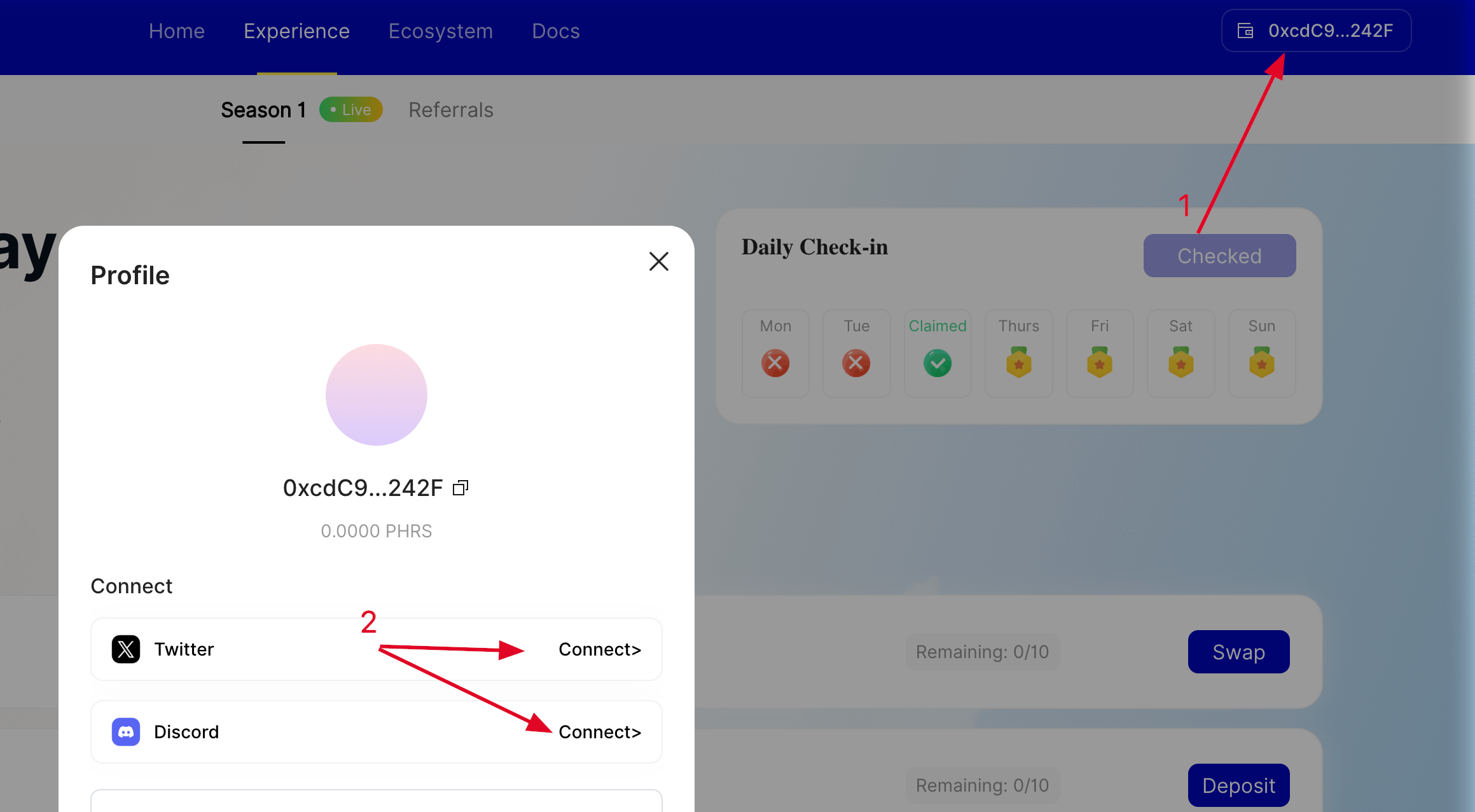
Step 4: Claim Testnet Tokens from the Faucet
-
Request free testnet tokens from the faucet.
-
If the faucet is down, ask in the Discord community—many users are happy to share tokens.
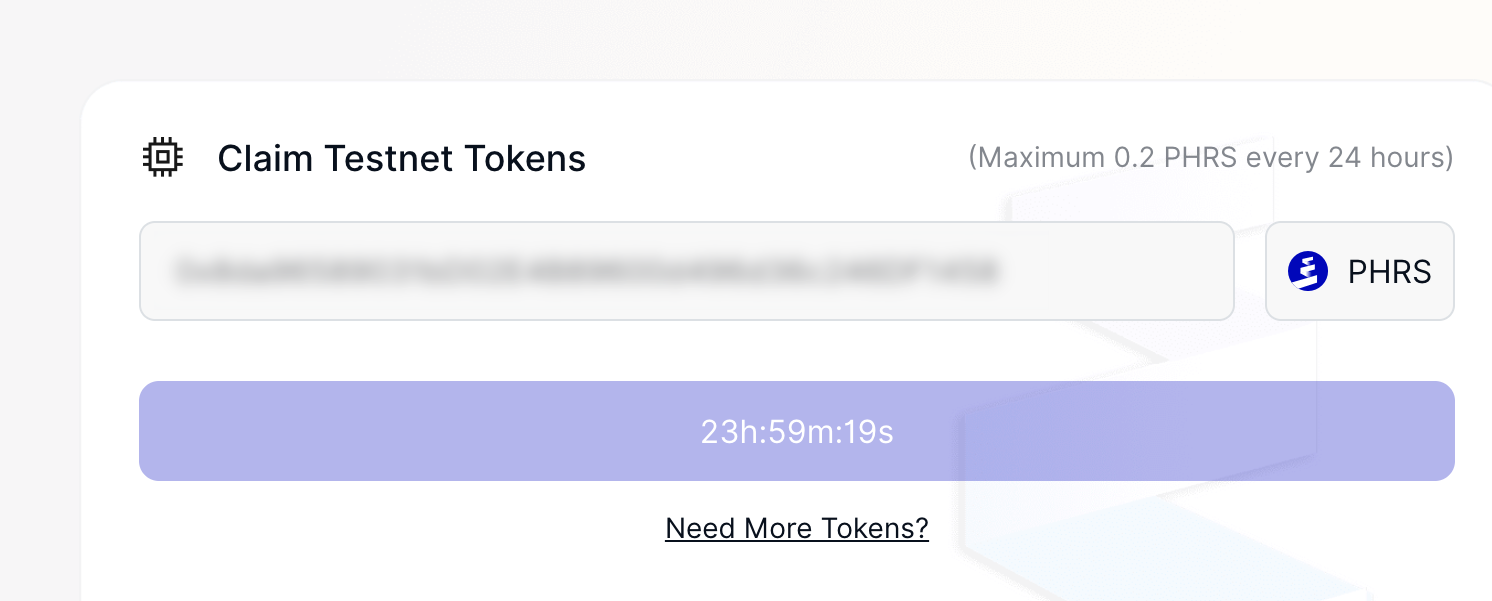
Step 5: Start On-Chain Activities
-
Use the testnet tokens to:
-
Swap tokens.
-
Add liquidity to pools.
-
Transfer tokens to other testnet users.
-

Step 6: Complete Social Tasks
-
Engage with Pharos on social media.
-
Retweet, share, or post about the project as required.
-
Verify your tasks through the testnet portal.

Tips to Maximize Your Chances
-
Be consistent – Complete daily check-ins and tasks regularly.
-
Engage with the community – Participate in Discord discussions to stay informed.
-
Use multiple features – Don’t just swap once; try liquidity pools, transfers, and other dApp features.
-
Invite active users – Referrals may have higher weight if your invited friends complete tasks.
-
Stay updated – The project may add new tasks or campaigns, so following announcements is key.
The Potential of a Retroactive Airdrop
Retroactive airdrops are one of the most rewarding ways for blockchain enthusiasts to earn tokens. Let’s look at some historical examples:
-
Uniswap (UNI) distributed 400 UNI to each early user, worth thousands of dollars later.
-
Arbitrum (ARB) rewarded early users with tokens that quickly gained market value.
-
Optimism (OP) also delivered a large-scale retroactive airdrop to testnet users.
If Pharos follows a similar model, those who actively participate in the testnet may enjoy significant rewards in the future.
Use Cases of Pharos
Pharos is not just a blockchain; it’s a platform built for real-world applications. Here are some potential areas it could impact:
-
DeFi – Faster swaps, lending, and liquidity provision.
-
Real-World Assets (RWA) – Tokenization of real estate, commodities, or bonds.
-
DePIN – Infrastructure such as decentralized wireless networks or storage systems.
-
Cross-Chain Interoperability – Seamless communication between blockchains.
By providing scalability, security, and interoperability, Pharos could become the backbone of future decentralized applications.
Frequently Asked Questions (FAQ)
1. Is the Pharos testnet airdrop confirmed?
Yes, the testnet airdrop campaign is live. However, the exact distribution of mainnet tokens has not yet been confirmed.
2. Do I need real money to join the testnet?
No. Testnet tokens are free and can be claimed through the faucet.
3. How long will the testnet last?
The project has not announced an end date, but it’s recommended to join as early as possible.
4. Can I use multiple wallets?
Yes, but be mindful that projects sometimes filter out duplicate or suspicious activity. It’s best to participate honestly.
5. What rewards can I expect?
While there are no guarantees, previous projects have rewarded early testnet users with valuable tokens.
Conclusion
Pharos is a promising Layer-1 blockchain that combines speed, scalability, and security with full Ethereum compatibility. With $8 million in funding already raised, the project is backed by strong investors and aims to push the boundaries of blockchain technology.
The ongoing testnet airdrop campaign offers users a unique chance to explore the ecosystem while positioning themselves for potential future rewards. By completing daily tasks, swapping tokens, adding liquidity, and engaging with the community, you increase your chances of qualifying for a retroactive airdrop.
As history has shown with projects like Optimism and Arbitrum, early adopters often reap significant benefits. Don’t wait—join the Pharos testnet today and secure your spot as an early user of this innovative blockchain.

